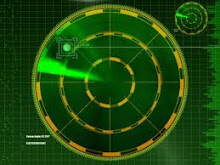An article by intelligence reporter Jeff Stein published in Newsweek magazine and dated Sept. 6, 2014, explores an innovative new proposal by a private-practice psychiatrist who has worked with the U.S. intelligence community.
The article, titled “Building a Better Mole Trap,” examines the concept put forward by David L. Charney, MD, to prevent and mitigate the damage to the U.S. by “insider spies” – U.S. defense and intelligence personnel who make a decision to give classified and sensitive information to international adversaries, competitors and “frenemies” of the U.S.
Charney has worked as a psychiatrist with U.S. insider spies who were caught and he says he derived much insight and understanding about their motives and, importantly, their regrets about spying. Charney believes that different approaches based on psychiatry and the practical nuts-and-bolts elements of spying can prevent insider spying in the first place and also stop it once it has begun.
Additionally, if classified information was given to adversary nations’ intelligence services, Charney’s proposal aims for a prompt and thorough “damage assessment” to mitigate harm from the spying.
So what is Charney’s bright idea? It’s actually a combination of many elements that he explained in a recently-published white paper. Part one was titled “True Psychology of the Insider Spy.” Part two was “Proposing a New Policy for Improving National Security by Fixing the Problem of Insider Spies.”
Charney calls for the creation of a “National Office for Intelligence Reconciliation (NOIR).” The word “noir” is also French for “black,” an appropriate descriptive element of the problems of, and solutions for insider spying.
HUMAN PSYCHOLOGY LEVERAGED
Based on his experience as a psychiatrist who has had contact with the intelligence field, Charney claims many insider spies are motivated by personal problems and crises of the kind that many people face from time to time. These can include marriage and family problems, financial stress, professional frustrations, self-esteem issues, life disappointments and similar challenges most of us face sooner or later.
Due to these kinds of very human stressors, an otherwise dedicated and patriotic member of the defense and intelligence community might be seduced by adversary intelligence agents to become an insider spy, according to Charney.
And once this terrible step is made, there is no turning back. Charney says the insider spy soon realizes he is trapped and in the clutches of ruthless intelligence agents from another nation’s government and has reached a point of no return. Life in prison probably awaits if he is caught, which will probably happen eventually.
If the insider spy thought things were bad before, he now realizes they have become much worse for him. But the insider spy must stay on the path of continued spying because there is no option to change course. Damage to the U.S. continues through the ongoing spying. It’s a lose-lose situation, Charney points out.
According to the NOIR proposal, a number of interventions would be implemented to prevent and resolve insider spying. These include, but are not limited to, establishing channels for insider spies to turn themselves in and be granted reduced penalties for their spying.
The NOIR concept includes specific ideas for how this could work in real life and the significant benefits for the U.S. defense and intelligence community, becoming a win-win scenario, Charney says.
Charney has submitted his well-thought-out proposal to key decision-makers and a wide swath of people in the defense and intelligence community as well as to other professionals and the general public. He and his associates have developed a very effective website.
In the “About” section of the site, the effort is explained further: "NOIR for USA is a 501(c)3 non-profit organization whose mission is to educate and promote to the US Intelligence Community, policymakers and the public the NOIR concepts and ideas which are intended to improve our national security by fixing the problem of insider spies in an innovative way.”
The section also notes, "Dr. Charney is joined in his efforts by former CIA clandestine service officer John Irvin, who is researching, writing and briefing NOIR concepts. Assisting in the marketing and communications is Cindy Kwitchoff, former Program Manager of the CIA’s counterintelligence awareness and training program.”
The NOIR concept clearly seems ready for prime time. But can the powers-that-be in the U.S. government understand and implement the intelligent and insightful recommendations of Charney and his associates?
COMPLEX MOTIVATIONS IN PLAY
Although Charney has found that many or most insider spies are motivated by personal psychological stressors and dilemmas, he also recognizes that some are truly motivated by moral and ethical beliefs and perspectives. These are a somewhat different category of insider spies and potential insider spies, he states.
In the recent Newsweek article, an email from 29-year CIA veteran Carlos D. Luria to Charney is noted (reportedly with Luria’s permission). Luria told Charney, “I liked the steps toward reconciliation though I fear that the ‘moralists’ in our dysfunctional Congress will tar and feather you for even suggesting them.”
Luria was referring to the flexibility proposed by Charney regarding the harshness of punishment for insider spies who voluntarily reverse course, turn themselves in and help with a full damage assessment.
Another key point was made by Luria about the motivations of some insider spies. He wrote that the “motivational matrix” contributing to insider spying can sometimes include moral and ethical concerns about U.S. society and the U.S. government.
Luria is quoted in the Newsweek article as explaining that this motivational matrix “as CIA’s case officers know, is a complex one, usually embracing a host of factors, but the one to which I believe your paper gives short shrift is the conscious and deliberate willingness to risk and sacrifice oneself for ideological reasons.”
According to the Newseek article, Luria wrote Charney that, “It is what drove [the Russian moles] Popov, Penkovsky, Tolkachev, Kuklinski and a host of others to volunteer their services to CIA. It was the insufferable disparities of Britain’s social order that motivated Kim Philby and the Cambridge Five [to spy for the Soviet Union]. It was the U.S. carpet bombing of non-strategic North Korean villages that tipped [British double agent] George Blake to volunteer to serve the KGB.”
Luria is also quoted as saying that some U.S. personnel may be disillusioned by “the shameful atrocities of Abu Ghraib” and could be “motivated to work secretly to undermine an unconscionable foreign policy.”
He also notes that, “The joblessness, the ever-growing income disparity, the seemingly reckless excesses of NSA’s intercept programs, the greed of Wall Street and the total paralysis of Congress provide plenty of reasons for disaffection.”
Luria may have a point. The "more perfect union” that our founding fathers aimed for is still a work in progress.
From the pre- and post-Revolutionary War land-grab from Native Americans and destruction of Native American societies to African-American slavery to multi-ethnic discrimination to exploitation of working Americans and ongoing injustices of many kinds, with millions of Americans (including children and adolescents) living in poverty and hopelessness, there are plenty of legitimate reasons for dissatisfaction with American society.
The Vietnam War era certainly was a wake-up call for many Americans about the serious mistakes our government and military can make. More recently, the invasion of Iraq immediately after the 9/11 events as well as the way that invasion and occupation were conducted raised many serious questions and much soul-searching by many patriotic Americans, including those inside the defense and intelligence community.
Moving forward toward “a more
perfect union,” two elements of interest may provide insight and give us more
ideas about possible solutions:
1) A concept called
“transcendent warfare” put forth in a graduate-level academic research paper by
a former Navy SEAL officer and more recently by a U.S. State Department
professional
2) The experiences of
the World War II U.S. Army 442nd Regimental
Combat Team, 100th Infantry Battalion and Military
Intelligence Service (MIS) – Army units mostly comprised of Japanese-Americans
TRANSCENDENT WARFARE EMERGING
“Transcendent warfare” refers to the concept proposed by a now-retired SEAL officer in his 2001 graduate paper at the Marine Corps War College, Marine Corps University, Marine Corps Combat Development Command, Quantico, Virginia. The paper was titled “Unconventional Human Intelligence Support: Transcendent and Asymmetric Warfare Implications of Remote Viewing.”
The SEAL officer’s paper explored the discoveries in human consciousness that resulted from research and operational activities in the 1970s, ‘80s and ‘90s and funded by the U.S. defense and intelligence community. After a series of classified code names for the program, it has generally come to be known as Project STAR GATE.
This was leading-edge and forward-leaning research at the time (and still is), much like Charney’s NOIR concept. And, like Charney’s proposals, the nature of human psychology and human consciousness was the key element.
The idea of using advanced consciousness to gather intelligence using methods that came to be known as “remote viewing” was so far-out that many people doubted the validity and usefulness of such an approach. Many people still have trouble accepting the validity of the research findings and operational successes (many of which remain classified).
An updated view of Project STAR GATE activities was presented in a 2010 graduate paper by a U.S. State Department professional. It was titled “Anomalous Human Cognition: A Possible Role within the Crucible of Intelligence Collection.” The paper was submitted as part of academic requirements at the National Defense Intelligence College and was cleared for open publication in 2010 by the Department of Defense Office of Security Review.
These papers and a robust amount of open-source information about remote viewing and Project STAR GATE provide ongoing insight for us about human nature, human consciousness, advanced scientific discoveries and how these and many other puzzle pieces might fit together.
The research from Project STAR GATE appears to be directly applicable to Charney’s NOIR concept. Advanced human consciousness involves getting good intelligence information and then making intelligent decisions.
This is key to Charney’s ideas of reaching out to the defense and intelligence community and U.S. government decision-makers and hoping they will also make intelligent decisions based on the credible intelligence about human psychology that Charney puts forth.
PATRIOTS UNDER PRESSURE
On the challenging issue of the low morale that many Americans sometimes feel about our checkered history as a nation, our leadership in Washington, DC, missteps of our defense and intelligence activities, the functioning of our society and other problems, it might be helpful to look at the experience of a unique group of American patriots during WWII.
After the Pearl Harbor attack, first- and second-generation Japanese-Americans in Hawaii and California faced tough scrutiny by our defense and intelligence community. Were there spies and saboteurs among them? Were they loyal to America or Japan, or torn between the two?
In Hawaii, where Japanese-Americans were well-integrated into the community, there reportedly were fewer attempts to randomly suspect or imprison them. However, in California, in part due to racial prejudice and hate-mongering, patriotic Japanese-American farmers, merchants and professionals, and their families were forced into harsh detention camps for the duration of the war.
Meanwhile, many
young men from these families and communities joined the U.S. military, in part
to prove their patriotism. Many ended up in the famed and highly-decorated Army 442nd Regimental Combat Team and 100th Infantry Battalion, fighting in Italy and elsewhere in Europe.
Others were assigned to a top-secret Army intelligence outfit called the Military Intelligence Service or simply the “MIS.” MIS personnel were sent to the Pacific theater, where they served in nearly all major campaigns and battles including in China and Burma.
MIS personnel were involved in many types of intelligence and counterintelligence activities. These included interrogating prisoners, intercepting and translating radio messages, and translating captured maps and documents.
They infiltrated enemy lines and helped flush out the island caves where Japanese soldiers and civilians hid. They helped convince many Japanese troops to surrender. MIS personnel also were active in psychological operations and information operations.
They did all this while many of their family members were behind barbed-wire fences in detention camps located in harsh and remote environments back in the U.S.
After the war, more than 5,000 MIS personnel worked in Japan during the occupation by the U.S. from 1945 to 1952. They were assigned to the occupation military government in disarmament, intelligence, civil affairs, finance, education and land reform. The MIS also helped develop the Japanese constitution.
The story of the 442nd RCT/100th and the MIS tells us that Americans and others can be conflicted and can have grave concerns about the actions of the U.S. government and its many moving parts at any given time.
And many of these concerns can be very legitimate. Injustices and inappropriate activities by elements of the U.S. government and within American society are very real indeed.
But, the more perfect union awaits us. It may be within our grasp. We must look for it, visualize it, use our perception and situational awareness to see and feel it.
As the retired Navy SEAL officer noted in his research paper when addressing the current issue of unconventional warfare, “The real challenge for the United States is not asymmetric warfare, but rather what this writer calls transcendent warfare, the ability to conceptualize and subsequently actualize an entirely new form of warfare that transcends all previously known models."
The SEAL is correct. We need to transcend the old models,
recognizing and acting on new intelligence obtained from innovative and state-of-the-art
research. And this is where Charney’s NOIR concept seems to fit in.
…………….



































































































































































































